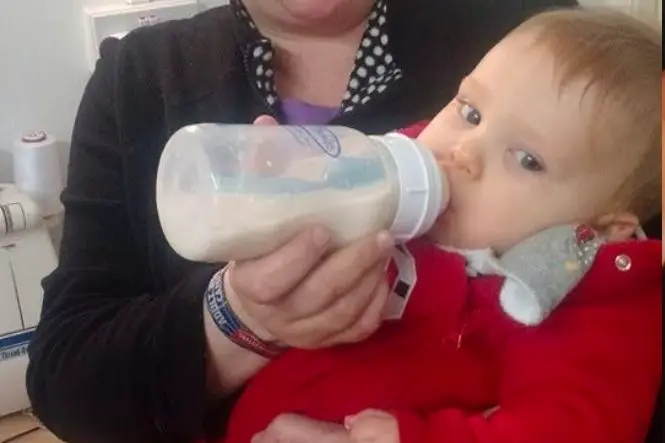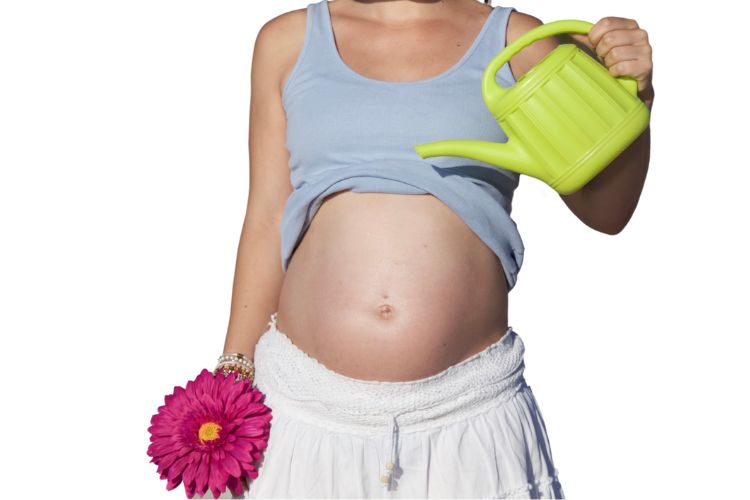Read this article to learn whether you can use gas drops in your baby’s bottle and other tips for breaking up gas.
Can you put gas drops in bottle to relieve the gas your baby is experiencing? You can put gas drops in a baby’s bottle, as stated by the American Academy of Pediatrics. Most brands allow for up to 12 drops per day, but you should check the label before deciding what douse to give your baby.
Some babies experience more gas for a variety of reasons. One reason is that they have colic symptoms which don’t necessarily cause more gas in their system but can cause them to cry more, resulting in them swallowing more air. Consuming air can cause gas bubbles in their stomach that causes discomfort.
Adding some gas drops to your baby’s bottle could be a way of helping to break up the gas bubbles in their stomach and relieve some of the discomfort. However, gas drops tend to be one of the more expensive ways of getting rid of gas. There are other ways to help with gas, but if you find that gas persists, you should console your doctor.
Table of Contents
What Do Gas Drops Do?
Gas drops are a medical treatment that has simethicone. Simethicone is an ingredient that breaks up gas bubbles and is in gas drops like Little Tummys Gas Relief Drops and Mylicon. Gas drops are safe to use in a baby’s bottle unless they take thyroid hormone medications.
Gas drops typically work very quickly and help babies expel gas naturally without the simethicone staying in their system. Unlike other drugs that work by the digestive system absorbing the medication, this is unlike other drugs that absorb the medicine. You should use gas drops after a feeding to help with any gas bubbles, but you should check the label to ensure you use the product correctly.
You should consider using gas drops when your infant is experiencing pain or discomfort. It can be challenging to know when that is the case, so you may need to look for signs that your baby is crying or fussing after feeding and if so, try the drops to see if it helps. There is no harm to trying the drops for a bit.
Can You Put Gas Drops in a Bottle?
You can mix gas drops with water, formula, or breast milk before giving it to your baby. Combining the drops with some other liquid could help your baby take the drops as they are unlikely to notice them. Ensure that you are using the mixture right away, as some gas drops will not keep well overnight.
It can be challenging to give drops to your newborn or any child since they are likely to fuss and reaction poorly to taking any medicine. However, mixing the gas drops with some water for babies over six months or in formula or breast milk can make it much easier to get them to take the drops, and it can also help cover up any unwanted taste.
Note that you should refrain from shaking the bottle too much after putting the gas drops in as this can cause air bubbles which will cause more gas other than preventing it. A couple of shakes or a quick stir should be enough to mix the drops in without causing air bubbles.
Other Ways of Breaking Up Gas
Gas drops are one of the more expensive options for breaking up gas bubbles. 30mL of gas drops costs about $12, and you should give them to your baby are many as 12 times per day. There are plenty of other methods you can try that cost less or nothing that will have a similar effect.
Some of the other tactics you can try are:
- Find which foods are causing gas. Some foods cause more issues with gas than others and even if your infant isn’t eating any solids yet, check which foods are in the breastfeeding mom’s diet.
- Use a formula that doesn’t need mixing. Shaking or mixing your formula before giving it to your baby can introduce air bubbles that later go into your baby’s stomach and cause gas bubbles. Try using concentrated or ready-to-feed formulas instead of the power.
- Slow how fast your baby is drinking. It may be that your infant is drinking too quickly that they swallow air. Try experimenting with different bottles and nipples to see which ones will encourage your baby to drink slower. Vented, angled, and collapsible bottles keep babies from swallowing air.
- Try burping your baby during each feeding. Some babies don’t like the interruption, but stopping to burp them during feeding can help get rid of air before it settles. A good burping after feeding is always a good idea too.
- Get rid of gas with tummy time. There are other ways to get rid of gas besides burping. Tummy time puts pressure on any gas which will get in out of your infant’s system. You can also lay them on their back and move their legs in a bicycle motion to move gas out.
Ensure that you are looking up burping techniques so you can adequately help your baby deal with gas. You should also look at what foods can cause gas in both the breastfeeding mother and the baby to determine whether there is something in their diets causing more gas than usual.
Some of the more common foods that cause gas are:
- Milk
- Cheese
- Yogurt
- Pudding
- Ice cream
- Products with milk, casein, whey, or sodium
- Wheat
- Corn
- Fish
- Eggs
- Peanuts
This list should give you a place to start figuring out whether the diet has something to do with the gas. Don’t feel like you have to give up everything on this list at once, and try taking away one or two and seeing whether there is a positive result.
Conclusion
Gas drops are safe to put in your baby’s bottle, and it can be better to mix them with water or formula since babies are more likely to drink from their bottle than sit still while you give them the drops directly. However, it is a more expensive option, and you may be able to use burping techniques and other remedies to get the same effect.






